Who in the World Is Lynda.com?
How a Fee-Based Educational Web Site Grew So Huge
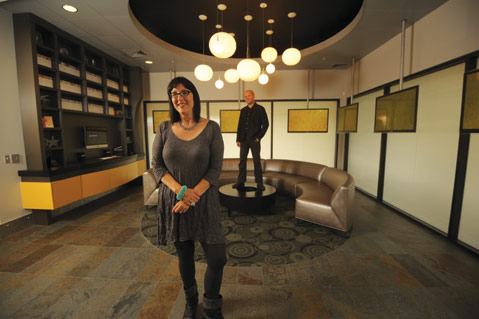
Considering her Hollywood childhood, let alone her corporate label, Lynda Weinman’s aversion to fame seems surprising.
“It’s really my least favorite thing about all this,” said Weinman this past spring, gesturing around her spacious office at Lynda.com, the company she founded from scratch with her spouse, Bruce Heavin, 15 years ago. It seems to have burst onto Santa Barbara overnight, but really, as Heavin jokingly put it, Lynda.com experienced “boring, predictable growth and success” and today dominates an industrial park on the south end of Carpinteria. Lynda.com also maintains offices in Ventura and Ojai, where it first began as a subscription-fee Web site providing educational video tutorials to train people in everything from programming their phones to mastering Photoshop, from using Excel spreadsheets to learning Unix. It’s also a company that last May was actively recruiting for more positions than UCSB.
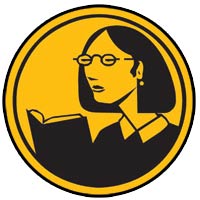
Admittedly, it is a weird species of fame. People “spot” Weinman via her funny resemblance to the company’s cute logo, a woodcut-like portrait designed by Heavin of a book-gazing, bespectacled woman with mid-length hair, kind of a cross between a racy librarian and MTV’s cartoon character Daria. The logo was omnipresent at the Santa Barbara International Film Festival last winter — where Lynda.com was the first-ever major presenting sponsor — and people began guessing who in the crowd was the Lynda from the logo. There were Lynda sightings true and false, and, before long, Weinman was as celebrated as Jeff Bridges or any other dependably visible S.B. celeb. Then came the warm glow, when people vague on what the site did could confidently describe a typical Lynda.com employee: well-paid, creatively challenged, annually taken on group trips (Disneyland this year). It’s a small wonder, then, Weinman became Ms. Popularity.
“All this time, I’ve been happy being beneath the radar,” said Weinman, who does resemble the logo, but projects more formidably in person, vibrant and taller than you might imagine. Though an intensely engaged and articulate conversationalist, Weinman sometimes drifts into reveries and sudden smart-phone communication flurries. She does not seem bookish, even though she began her computer life as an author. She does sometimes miss the first year of their Web site — not long before the dot-com crash in the mid 1990s — when they lived in Ojai and, though they had run a school there, were neatly invisible. Ironically, now that those classes have become legion and are no longer taught by her, she has become legend-ish — constantly sought as a speaker and awarded by business groups as a model entrepreneur for our new age.
“It’s weird having people know you, people that you don’t know,” explained Weinman, who’s traded anxiety about the logo and company name into embracing publicity for the greater good. “Now we want exposure. With all these openings we have right now, I really do want people to know about Lynda.com.”
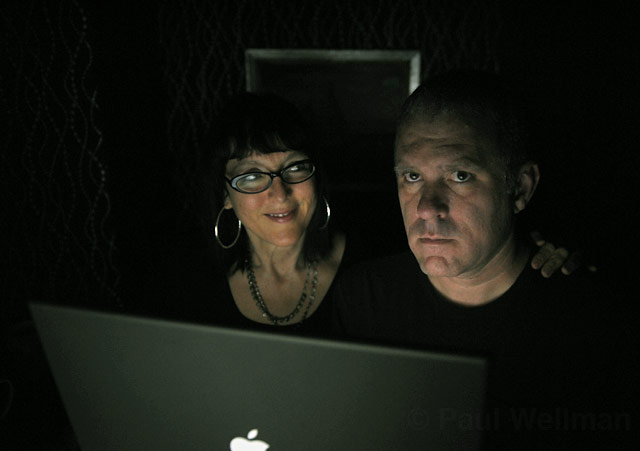
Lynda’s Dot-Com Boom
Lynda.com can be summarized easily: It’s a very navigable, handsome site where you can select a tech video course (like computer animation), pay a small fee, and dive into a crystal-clear and well-vetted educational experience. It is not a for-profit university like Phoenix, but it’s becoming more complex each week. And it did all begin with Lynda, but not because of some inherent tech-nerdicity. “The funny thing is I never even touched a computer until I was 28,” said the 56-year-old. “That’s late.” (Of course, that was about the time they appeared in normal homes.)
Born in the mid 1950s, Weinman grew up near Melrose in the house featured in Jackie Gleason’s one auteur film, Papa’s Delicate Condition. As a teenager, Weinman’s permissive parents talked her way into the Sherwood Oaks Experimental High School (now College) by convincing the principal she could work part-time at Der Wienerschnitzel for $1.33 an hour to offset the tuition. Though radically self-motivated, Weinman was a little lost later at Evergreen College in Washington State and spent some time dabbling in ceramics. “I just threw pots for a couple years,” she said, eventually settling on museum studies and befriending classmate/Simpsons creator Matt Groening, who spent some time in Santa Barbara with her earlier this year. Weinman looks up to him as a success mentor, explaining, “He’s absolutely unspoiled by it.”
After college came retail back in Los Angeles, first a museum gift shop and then her own two clothing stores called Vertigo on Sunset and Melrose, founded on a $20,000 loan from her grandfather. “I went out of business,” she said grimly, but added, “I learned what a terrible model retail is.” There’s much less waste, she’d later discover, in cyberspace.
Weinman’s romantic life provided springboards, too. “I had a boyfriend who worked on Star Wars,” she said, which got her interested in special effects and landed her gigs typically reserved for geeky males on such cheesy masterpieces as RoboCop 2, Bill & Ted’s Excellent Adventure, and Star Trek V.
One weekend in 1982, the same boyfriend brought home an Apple II; Weinman grabbed the manual and began computing. “Sometimes it seems like everything I did led up to this,” she recalled thinking.
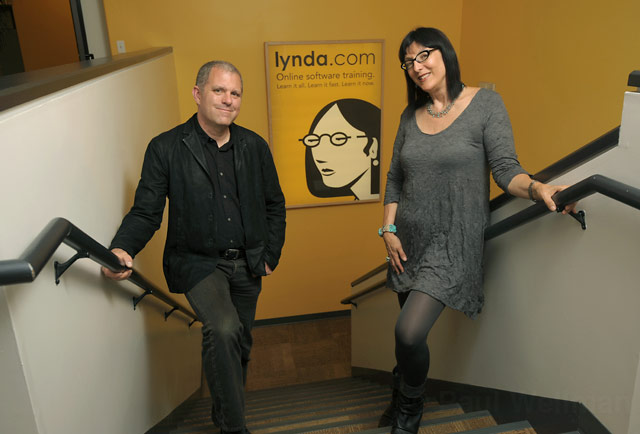
The ultimate booster rocket from museum studies to media mogul-hood was her devoted spouse, Heavin, who’d had an early introduction to computers via his dad, a McDonnell Douglas engineer who’d brought home a TRS-80 with cassettes, punch cards, and a staggering 32k of memory back in the primordial PC days of the 1970s. But by the time Heavin met Weinman at the Art Center College of Design in Pasadena, he was sick of computing and had returned to his first love: illustration. She was a teacher, and he was a student more than a decade younger; however, they didn’t hook up until after his graduation. “She can tell you a racier version than I can,” suggested Heavin, though Weinman remained mute on the topic.
While teaching at the Art Center in the mid 1990s, Weinman realized that no one had yet paired graphic arts with Web site design — this was just before everyone you knew became a Web designer — so she pitched a book idea to New Riders Publishing. In the ensuing four years, Heavin — who made money designing album covers for gospel groups — and Weinman got married, did research, and published designing web graphics, which became a royalty cash machine. Many other books followed.
Suddenly, Weinman and Heavin were in the real-estate market and found themselves loving Ojai, where houses were cheaper than Glendale and the rat race was far away. After some unlucky slumps during the first few months there, they had launched Lynda.com by 1995 to answer questions about their books. Perhaps more importantly, they started teaching computer classes, renting out parts of Thatcher School on weekends, and were an immediate hit, with more than 60 people coming to each session. The Vatican even sent pupils, and so did Martha Stewart. Gradually, the Web site and the classroom merged, evolving into Lynda.com’s massive success.
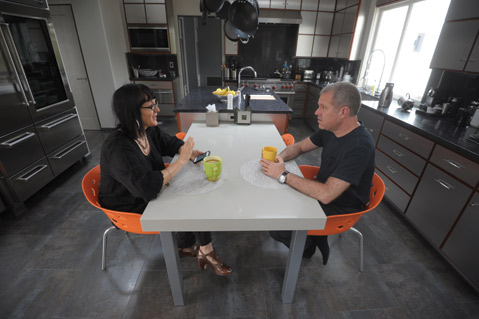
Growing Pains and Gutsy Payments
Well, not quite. The metaphorical road from Ojai to Carpinteria proved almost as twisty as Casitas Pass. “We’ve been able to disrupt ourselves regularly,” said Weinman. For instance, the Web site was born after Peachpit Press turned down a book pitch. By then, technology was moving so fast that a tech book would often arrive in the marketplace already outdated. The Internet, on the other hand, was immediate.
More dramatically problematic was the dot-com bubble burst. Lynda.com had jumped on before the big rally, was buoyed by the technological revolution, and then saw it all evaporate. “We went from 36 employees to nine,” said Weinman. “It was painful.” Remembered Heavin, “Lynda almost lost faith in it.”
Instead, they evolved, and technologically, too, from VHS to DVD to CD-ROM to the online videos. “We’re a television studio,” Heavin said proudly. When they began, the world was dial-up, but the width of the digital band has just recently caught up with the company’s streaming ambitions, another factor that’s slowly yielded them success.
But Weinman’s most fretful decision came at the beginning, when the exploding Internet’s guiding mantra was this: “Information wants to be free.” Pay-to-view was something only porn sites could do, the thinking went, but Weinman believed otherwise and began charging users to access Lynda.com’s content. “It’s a complete misnomer that you can’t charge for Internet content,” explained Weinman, who’s eagerly awaiting the results of the New York Times’ recent decision to do the same for some of its online copy.
It was an enormous risk, explained Eric Robison, Lynda.com’s new president and CEO — whose past work involved both Microsoft’s Paul Allen and the Fab Four’s Paul McCartney — but he applauds Weinman’s consistency. The prices range from about $25 a month to $250 per year. “And looking back,” said Robison, “they’ve never raised their prices. It really is an incredible value, when you consider all that’s available.” The company has recently added sound-recording tutorials and inspirational videos, though they still reject other fields entirely, or what Weinman calls “sage on the stage” stuff. No Kantian Aesthetic Teleology vids are likely. And she promised, “We’ll never be overtly political or controversial either.”
All told, today they employ 190 staffers and 250 “authors” who are creating the 950 courses and 58,000 tutorials; the authors are paid royalties based on how many hits their courses get, and it can add up. “We have one author who is a Brooks professor and drives a very nice car,” divulged Weinman. “He didn’t make that teaching at Brooks.” Yet, as they wildly careen forward, they’ve also learned caution: The FBI came by recently after learning that an Al Qaeda operative was subscribing to the service. No word at press time on whether Lynda.com appeared on Osama bin Laden’s hard drive.
Into the Paradox
One day last May on the company’s Carpinteria campus, Weinman’s personal assistant, Sharon Ludtke, was bubbling over with hipster glee. That morning, Howard Stern had spent five minutes of his Radio XM show praising Lynda.com, making profuse fun of himself for failing as a student while praising the product itself. “I guess we have arrived,” said Ludtke, a former New Yorker whose interests span from the Internet to Soupy Sales and Godzilla movies. “You can’t pay for this kind of publicity.”
“I think success is a kind of amplifier,” she said. “If you are a jerk, it makes you more of a jerk.”
They have a good blend of nerd culture and high camp. Like most who enter larger-than-life status, Weinman is a walking paradox. She insists that she has never had a “child within” — that she can’t even watch animated films — but she collects the artist 64 Colors, whose work features Hello Kitty and Powerpuff Girl motifs. The office is high-tech décor with electronic keys guarding passages and big monitors running psychedelic color patterns; almost every nook contains a Disney plush or a wind-up robot shrine. The sanctum reflects the woman at the top. “I think success is a kind of amplifier,” she said. “If you are a jerk, it makes you more of a jerk.” Presumably, success has made her quirkier.
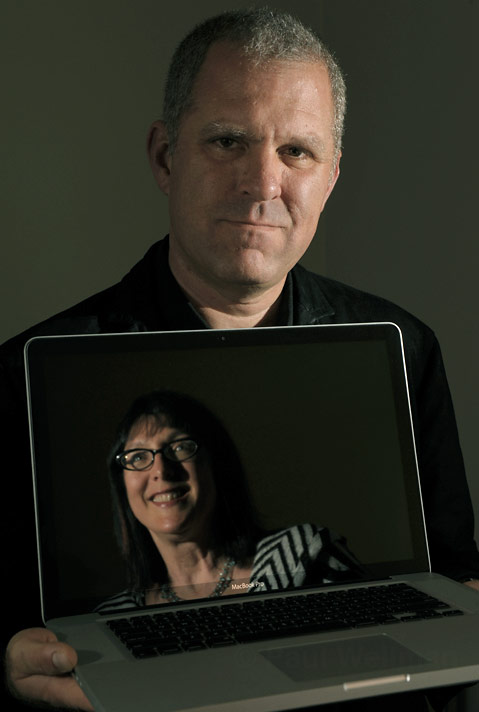
The paradoxes resolve in their impossible marriage/business partnership. Close-cropped, fashionably dressed Heavin is the Wild Creative side, she says, while he declares her to be the Intense Focus any business requires. “Bruce is the secret sauce,” she said behind his back. “He’s very strategic, an idea factory.” But she’s the logic. “I hear ‘no’ a lot,” he explained, behind her back. “And you should say ‘no’ to me. I don’t know if we’ve ever established boundaries. There are invisible lines, and we cross them all the time.”
Whatever the formula, Heavin and Weinman’s company is already a major employer in Santa Barbara County and a big supporter of the arts in an era marked by failing businesses and waning philanthropy. When this was written, Lynda.com had more than 70 job openings, while UCSB — long relied upon as the region’s top employer — had just 59.
“One great thing is that we bootstrapped this,” said Weinman proudly. “We’ve never taken investment money from anyone.” The growth has been chiefly organic, reliant on word of mouth, though now, apparently, Howard Stern is one of those mouths. But they remain leery of aggressive promotion, not wanting to hype more than can be delivered.
“We’re kind of idealistic,” said Weinman, as quietly as a librarian. “But so far, it’s worked.”



